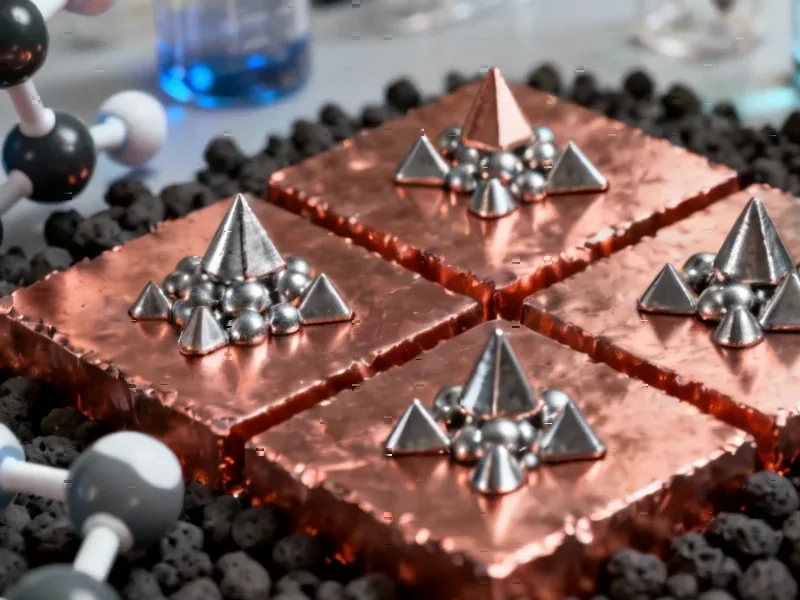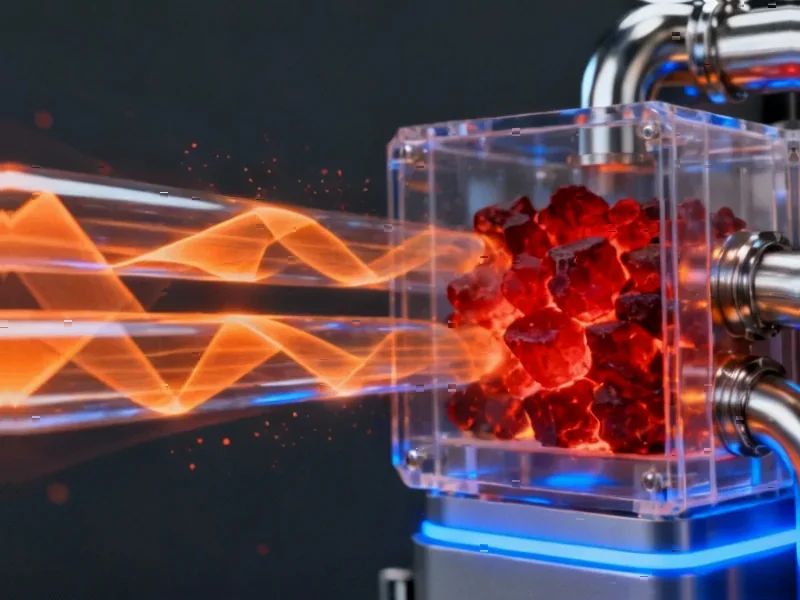According to Nature, a theoretical study reveals that 4-amino-3-thioxo-6-methyl-1,2,4-triazine-5-one and its derivatives demonstrate exceptional copper corrosion inhibition through strong chemisorption mechanisms. The research shows adsorption energies reaching -114 kcal/mol on Cu(110) surfaces, with molecule 2c exhibiting the highest inhibition efficiency due to methyl group substitution at the C5 position. These findings suggest significant potential for developing next-generation corrosion protection technologies.
Table of Contents
Understanding Corrosion Inhibition Mechanisms
Corrosion represents one of the most persistent and costly challenges in materials science, with global economic impacts estimated at $2.5 trillion annually according to NACE International. Traditional corrosion inhibitors often rely on physisorption mechanisms, where molecules adhere to surfaces through relatively weak van der Waals forces. The breakthrough in this research lies in the demonstrated chemisorption process, where inhibitors form covalent bonds with copper atoms, creating much more durable protective layers. The significance of bond length changes observed in the study – particularly the 0.234 Å increase in S1=C2 bonds – indicates substantial electron sharing between inhibitor molecules and copper surfaces, fundamentally changing how we approach corrosion protection at the molecular level.
Critical Analysis of Practical Implementation
While the theoretical results are impressive, several practical challenges must be addressed before commercialization. The study focuses on pristine copper surfaces under ideal conditions, whereas real-world applications involve contaminated surfaces, varying temperatures, and complex environmental factors. The remarkable adsorption energies in the -46 to -114 kcal/mol range suggest potential stability issues – such strong bonds might make inhibitor removal or surface reconditioning difficult in industrial processes requiring periodic maintenance. Additionally, the environmental impact and toxicity profile of these triazine derivatives remain uncharacterized, a critical consideration given increasing regulatory scrutiny on industrial chemicals. The research also doesn’t address long-term stability under operational conditions, including thermal cycling, mechanical stress, or exposure to other chemicals that might compete for surface adsorption sites.
Industry Impact and Market Implications
The implications for multiple industries are substantial if these inhibitors can be successfully commercialized. The electronics industry, particularly semiconductor manufacturing and PCB production, could benefit from enhanced copper protection during fabrication and operation. The demonstrated preference for Cu(110) surfaces with adsorption energies approximately 17% higher than Cu(111) suggests potential for surface engineering optimizations in microelectronics. The energy sector, including power transmission and renewable energy infrastructure, faces massive corrosion challenges where improved copper protection could extend equipment lifespan significantly. The marine and automotive industries, where copper alloys are extensively used in heat exchangers and electrical systems, represent additional multi-billion dollar markets. The ability to precisely control electron density redistribution through molecular design opens possibilities for custom inhibitor formulations targeting specific application requirements.
Commercial Outlook and Development Timeline
The transition from theoretical research to commercial products typically requires 3-5 years of development and testing. The next critical steps include synthesis optimization for cost-effective production, formulation development for practical application methods (sprays, dips, or additives), and comprehensive environmental and toxicological testing. The scale of bond length changes measured in ångströms provides quantitative targets for molecular optimization, but manufacturing consistency at industrial scales presents additional challenges. We anticipate initial commercial applications within 2-3 years in high-value sectors like aerospace and specialized electronics, with broader industrial adoption following regulatory approvals and cost reductions. The demonstrated spontaneous adsorption (negative ΔG) and strong chemisorption characteristics position these triazine derivatives as promising candidates to replace older, less effective, or environmentally problematic corrosion inhibitors currently in use.



